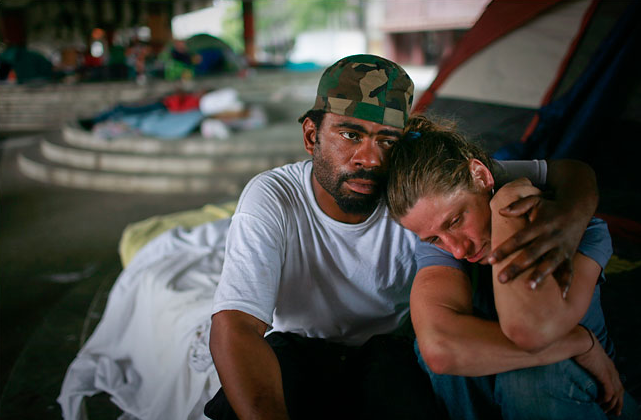There would seem to be very little in Scott McLellan’s recent exposé of the Bush White House that very many of us would consider to be “news.” Much of it is, however, a poignant reminder of how consistently and extensively incompetent and irresponsible the current administration has been on issues large and small. Its response to Hurricane Katrina is a prime example, as McLellan notes that following Katrina, “the White House spent most of the first week in a state of denial.” The first week, it turns out, was simply the tragic rehearsal for what would become (and continues to be) a farcical government policy of profound neglect and indifference.
The point was driven home for me by the image of a couple who live in a tent in a “homeless encampment under a highway overpass” that was used to anchor a story in the NYT on the persistence of homelessness in New Orleans.

Every city faces the problem of homelessness, but according to HUD, since Katrina the numbers in New Orleans are off the charts, with 4% of the population currently living on the streets (by comparison, the homeless rate in NYC = .59%; Washington, D.C. = .95%; and Atlanta = 1.4%). And the numbers continue to grow! With FEMA planning on closing down its final six trailer parks this coming week and the city’s plan to eliminate four major public housing developments that consist of 4,500 units, the situation only promises to get worse. But such numbers, as astronomical as they are, are hard to process. And in the end they reduce policy considerations to questions of an accountant’s bottom line that is all too easy for governments (or individual citizens) to overlook (especially when it doesn’t effect you directly, like, say, body counts in the War in Iraq).
The above photograph, on the other hand, captures the utter despair of individuals trapped by a system and circumstances that seem to be completely out of their control. Indeed, the image resonates in many ways with Dorothea Lange’s “Migrant Mother.” Notice, for example, the blank stare in the man’s eyes and how they avoid making contact with either the camera or the viewer, as well as to how he embraces the woman who clings to him as if a child in need of the protection that he knows he cannot provide; and notice too how she turns her face from the camera in shy resignation of her situation. Differences between the two photographs of race, gender, and age abound, to be sure, but they don’t (or at least should not) mitigate the simple fact that these are people in need and that we should be helping them. There is one other difference, more pronounced and perhaps more significant: Lange’s “Migrant Mother” helped to animate the social welfare state that assumed the responsibility to care for those in need; the photograph above marks the effects of a neo-conservative political imaginary that began with the father’s appeal to a “thousand points of light” and has achieved its nadir (or is it its zenith) with the son’s utter evisceration of a political culture of care and social accountability.
Marx had it right, it would seem, “all facts and personages of great importance in world history occur, as it were twice … the first time as tragedy, the second as farce.”
Photo Credit: Lee Celano/NYT
[…] imagery has demonstrated, those efforts have been a model of efficiency and effectiveness that put U.S. efforts to help the victims of Hurricane Katrina to shame. But, of course, what we should not forget is […]